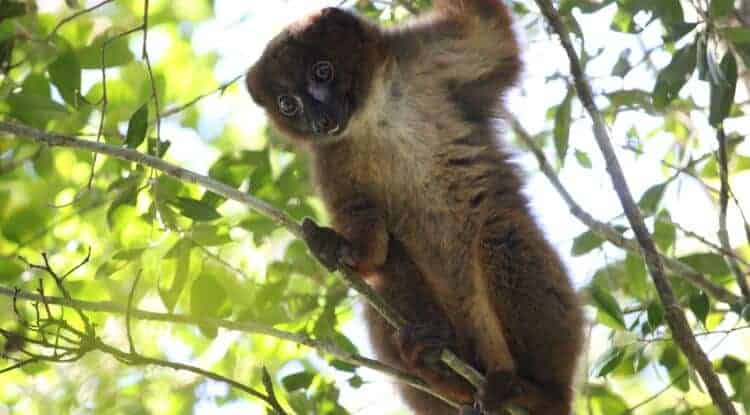University of Arizona anthropologist Stacey Tecot has spent 17 years studying red-bellied lemurs in Madagascar’s Ranomafana National Park. One of the biggest ongoing challenges in conducting her research: keeping track of who’s who in the lemur community.
In search of a way to better track and recognize individual lemurs in the wild – in the least invasive way possible – Tecot and fellow anthropologist Rachel Jacobs, of George Washington University, enlisted the help of their colleague Andrea Baden and computer scientists to create a facial recognition system capable of identifying lemurs through their distinctive physical characteristics.
The result was LemurFaceID, a computer-assisted recognition system that has the potential to redefine how researchers track different species in the wild.
The technology, described in the current issue of the journal BMC Zoology, will support researchers in important evolutionary studies and aid in conservation efforts for lemurs, which were named the world’s most endangered group of mammals in 2012.
Researchers have typically relied on one of two methods to track lemurs. One is to physically capture and tag them – something Tecot and Jacobs have avoided, since it can be stressful for the animals. The other is to simply observe the animals visually, which takes a lot of legwork and requires highly skilled and experienced researchers for the most accurate results.
With LemurFaceID, researchers will be able to build a database of photos of Madagascar’s lemurs, which they can then use to identify individual animals and to help confirm their field observations. The technology could also make it easier for researchers to collaborate and share information and conduct more integrated research.
“Studying individuals and populations over long periods of time provides crucial data on how long individuals live in the wild, how frequently they reproduce as well as rates of infant and juvenile mortality and ultimately population growth and decline,” said Tecot, an assistant professor in the UA School of Anthropology and senior author of the research. “Information like that can inform conservation strategies for lemurs, a highly endangered group of mammal.”
LemurFaceID works on principles similar to human facial recognition systems, like the one you encounter when tagging friends on Facebook.
In the case of lemurs, it recognizes features like hair and skin patterns, and it works with impressive 98.7 percent accuracy when given two face images of the animal.
Researchers hope the program can serve as a model for tracking other species and, in some cases, potentially replace physically tagging animals.
“We think this method could be applied to studies of species that have similar variation in hair and skin patterns, such as red pandas and some bears, among others,” said Jacobs, a biological anthropologist at George Washington University’s Center for the Advanced Study of Human Paleobiology and co-lead author of the research.
Tecot, Jacobs and Baden worked with computer scientists at Michigan State University and Hunter College in New York to develop and test LemurFaceID using a dataset of 462 images of 80 individual red-bellied lemurs and a database of 190 images of other lemurs. There are over 100 different lemur species found in Madagascar.
Tecot said the facial recognition system could help researchers do a thorough population census to reassess the status of red-bellied lemurs in Madagascar. The technology also may help her and Baden with their current research, which focuses on the evolution of shared infant care in red-bellied lemurs and why some fathers and siblings share infant care responsibilities, while others don’t.
Tecot hopes the facial recognition system can one day be extended to an educational smartphone application that would allow locals and tourists in Madagascar to match photos they take of wild lemurs with images in the database to learn more about the individual animal.
“We see lots of different potential applications for this,” Tecot said. “This is just the first step for us in taking this in many directions.”


